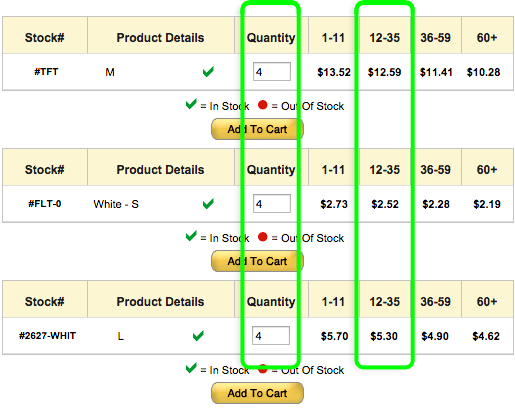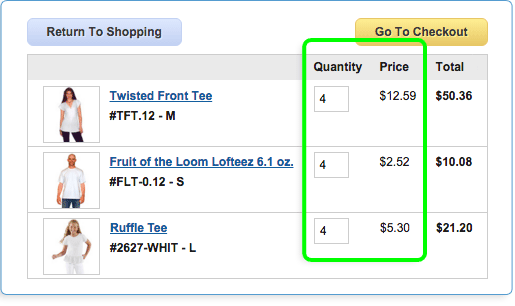Dyeing is a craft and a science. There will be a learning curve and many variables that affect the outcome.
Want a specific color? Test first. Colors can vary from dye lot to dye lot because the colors used for mixing can vary. This applies to ALL dyes. If you are not sure about which dye or color to choose, give us a call or send us a message! We are here to help! However, in the end, you should still test because many situations are unique. Keep in mind too that color is in the eye of the beholder - we do not offer color matching services, nor can we (or any dye seller) guarantee that the color you see on your monitor will be the color you get on your fabric. There is no guarantee that the same dye will be the same on all your fabrics. Different materials take dyes differently. Different dyeing methods can and do produce different results, even with the same color. The variables are numerous so testing is important. Questions? Please ask! We want to help!
Like other companies, we have to limit our liability for replacement or refunds for defective products only, and cannot take financial responsibility for time or other materials when a dye job doesn't come out the way you expected. We stand behind the products but can make no guarantees about how those products will work in every situation, although we try harder than most companies to help you to choose the product most likely to succeed for you.
If you are just getting your feet wet (hopefully not with dye) and you feel a bit overwhelmed by the 160+ color choices we offer, or you are interested in mixing your own custom colors, then you might want to keep it simple and start with the "basics" - our 19 pure manufacturer's colors are made for mixing and easier to use when making gradation (ombre') effects or mixing your own custom color palettes.
Pure (single color) Fiber Reactive Dyes:
PR1 Lemon Yellow, PR3 Golden Yellow, PR4 Deep Yellow, PR6 Deep Orange, PR12 Light Red, PR13 Fuchsia Red, PR22 Cobalt Blue*, PR23 Cerulean Blue, PR25 Turquoise* (T), PR26 Sky Blue, PR117 Grape, PR186 Nebula Navy**, PR188 Bluebird* PR189 Magenta Galactica, PR190 Atomic Fireball*, PR191 Blue Abyss*, PR192 Houdini Blue, PR194 Dye-namite* & PR175 Neutral Gray (also a hot water dye)
No matter which colors you use, read the directions for your specific dyeing method carefully, follow them step by step, and test first when the results are more critical. The color, the evenness (or lack of), and the total effect produced depend on many factors that you control and some you do not.
It is always best to test the suitability of a color or product (as well as your technique) before using it extensively on large projects or production runs for resale.
* Your fabric Just because your fabric is a natural fiber does NOT guarantee it will dye the way you want it to! Different types of the same fabric, like say, bolts of "identical" cotton fabric from different manufacturers or bolts from the same manufacturer but a different mill, can all dye slightly differently. 100% cotton t-shirts from different manufacturers in the same dye bath and have them all come out a slightly different color or shade. On silk, Fiber Reactive colors can shift dramatically - mixes with blue in them more than others. In the extreme, the black Fiber Reactive dyes on silk (a protein fiber) will yield shades of brown or maroon, Forest Green yields Chartreuse, and Royal Blue yields more of a Royal Purple - the variables can be endless. Then consider the factory finishes present on most commercial fabrics - these finishes are the enemy of dye! So with all of this to consider, we repeat - TEST FIRST and if it's super important, be prepared to test again. Fiber Reactive dyes can produce anything from subtle pastels, to intense vivid colors.
* Dyes are made for full immersion (solid color) dyeing based on a formula created for each color; if you are ice dyeing, tie dyeing, low immersion dyeing, etc., you must plan and adjust for differences from dye lot to dye lot. Pure dye colors will be more consistent but they too vary which is why mixed dye colors also vary. Test first if it's important and do not expect the same results every time if you are using alternative dyeing methods.
* Amount of dye used, for example, Fuchsia can vary from a light pink to a dark Magenta just by varying the quantity of dye used. Some dye lots may be denser than others due to manufacturing conditions so more or less dye may be needed to get the same shade. You may need to adjust the quantities after testing to fine tune the shade you want.
* The look of the powder (or liquid) does not indicate the final color! The the color of the dye powder or the liquefied dye may be VERY different than the actual color that will manifest on your fabric. You must test the dye to see the final color (sprinkling liquid or powdered dye on paper or fabric is not a test - you will need to go through the steps.
* Temperature of the water of the dye bath - too cool and the chemical reaction is sluggish; too hot and way more of the dye "hydrolyzes", i.e. magnetically attaches to the water molecules and not the fabric, so way more dye washes out and doesn't stick. Mixing dye powder with hot water kills some dye colors, making them wash out; use lukewarm water and Urea for best results.
* Curing/batching temperature - if the temperature is less than 70° F where you leave your tie-dyes or dye paintings - you may get paler color after the washout. The warmer the surrounding temperature, the better the color.
* Pre-washing? - pre-washing with hot water and Dharma Textile Detergent removes unseen oils, dirt, and fingerprints that can cause a splotchy dye job or chemical residues or starches that can affect overall dye color. Pre-washing is always recommended for best results.
* Mixing your dye - temperature matters! Cold water doesn't dissolve the dye very well. Adding powder to water doesn't dissolve the dye very well. Both cause "freckles" of undissolved dye on the fabric. Best to paste up the dye by adding lukewarm water gradually while you are smashing it with a hard spoon, like making lump-free gravy with flour and water. Better yet, use a paste up process with urea water help dissolve your dye.
* Water Chemistry - hard water causes dull colors, excess chlorine causes some colors to wash out more or fade before they ever fix to the fabric, etc. Also, we have had folks who travel and dye fabric in different environments tell us that colors can come out differently in every city they visit, water chemistry being the only variable.
* Fabric finishes - was the fabric optically whitened by the fabric mill that produced it? Optically whitened fabrics dye differently than true PFD fabrics, which is natural colored. Cheap fabrics that were unevenly optically whitened will also dye unevenly. Fabrics treated with Permanent Press dye poorly, as do fabrics treated with Scotch Guard type products, or starches etc.
* How old is your dye? - the shelf life of powdered fiber reactive dye, for example, varies from 1 year to 5 depending on the color, and it will gradually start to lose its strength.
* Storage conditions - IMPORTANT - shelf life is severely shortened by extreme heat, light, and moisture.
Wash fastness, light fastness, fading, bleeding, all depend on many factors; the type of dye you use makes the biggest difference but the fabric you are dying and what it will be exposed to play a part too. As you can see, there are a lot of variables! That is why the craft of dyeing is part science, part art, and a lot of experience and practice. To repeat a color exactly, you need to use the same dye lot, and you need to do everything exactly the same every time. Weighing the fabric and the dye with a scale is much more accurate than measuring with spoons and cups. The color charts are meant to be used as a guide, but they are only as accurate as the printer's ink, your device screen or monitor, or the eye of the person who made (and is looking at) the chart.
The main thing is to have fun!! Like other arts and crafts, dyeing is fun!












